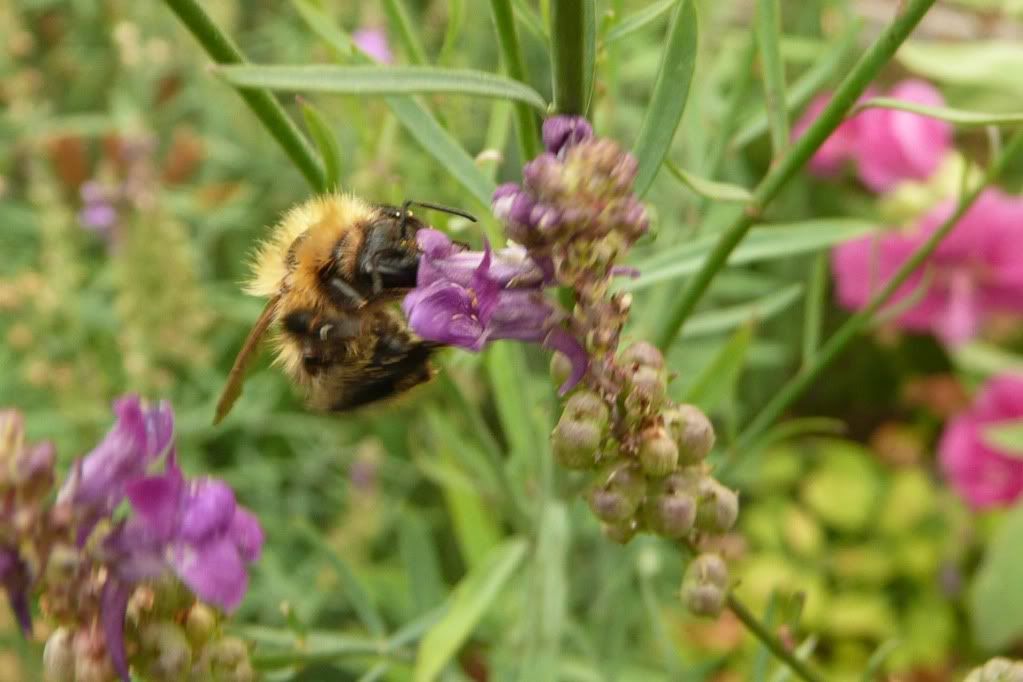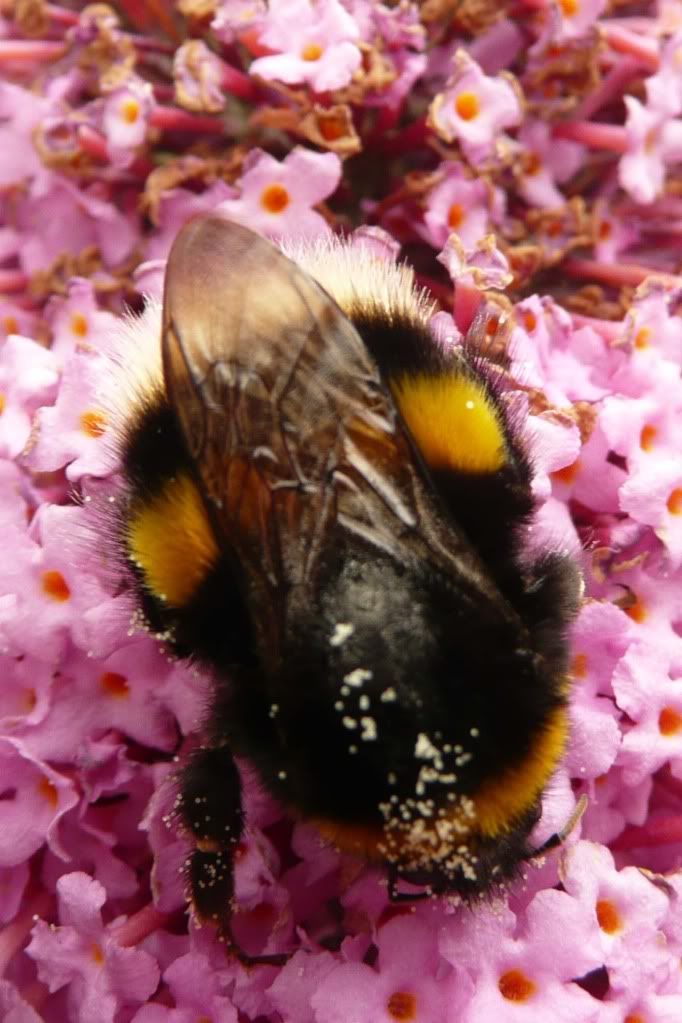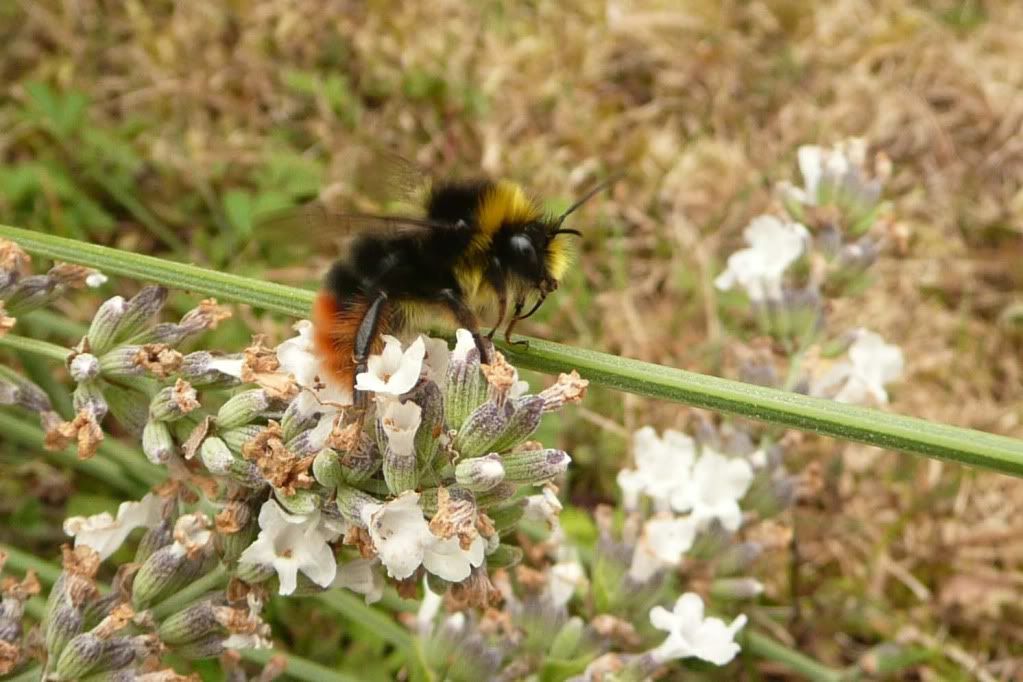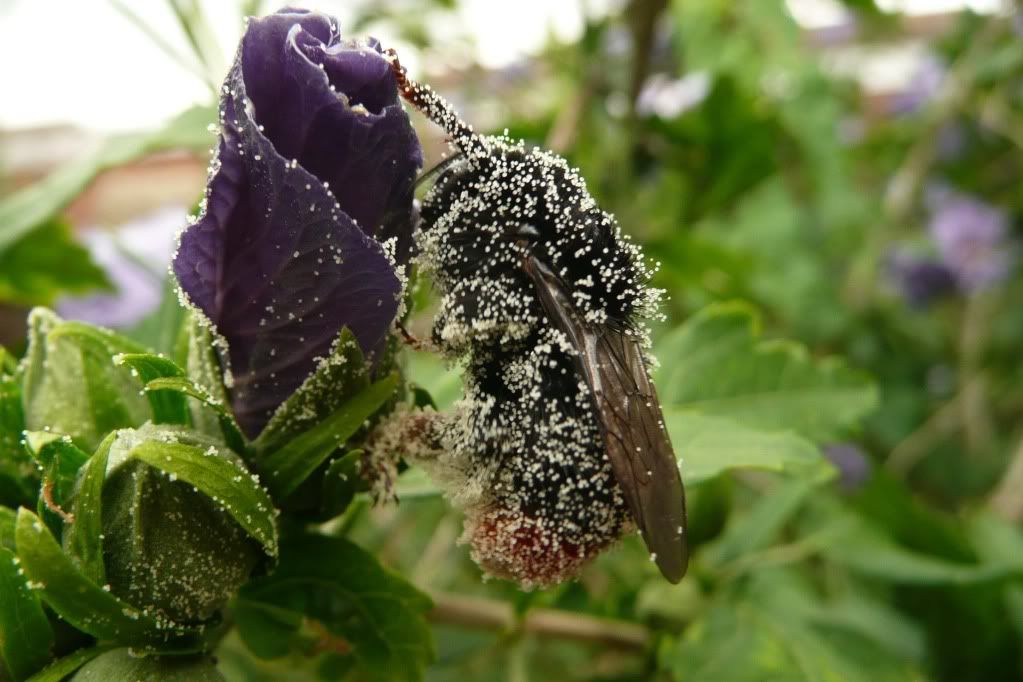This time of year can be very difficult for an inexperienced amateur to try and identify bumblebees. First generation workers are looking faded, second generation workers are more colourful, next years queens have taken to the wing, emerged males can look totally different to the female of the same species and just to add to the confusion cuckoo bumblebee queens look remarkably (but slightly different) to the hosts whose nests they hope to parasitise next year.
Unlike the nearby meadows, which have mostly turned to seed, the plants in the garden are still in flower and providing an a source of food to the bees and so it is an opportunity to use the 'Field Guide to Bumblebees' (Edwards & Jenner) to try and identify them.
.
A common carder bee on purple toadflax - an annual that seems to attract more bees than any other flower in the garden:
.
.
On the buddleia, what appears to be a queen buff tailed bumblebee; differentiated from a white tailed bumblebee by the thin yellow line above the white tip of the abdomen.
.
.
On the lavender, a male red-tailed bumblebee, it differs from the females by the yellow markings on the thorax and head. Also, males don't collect pollen and don't sting.
.
.
A queen red tailed bumblebee is usually easily identified, but when she is covered in pollen from the latvatera it becomes a bit more difficult.
.




No comments:
Post a Comment